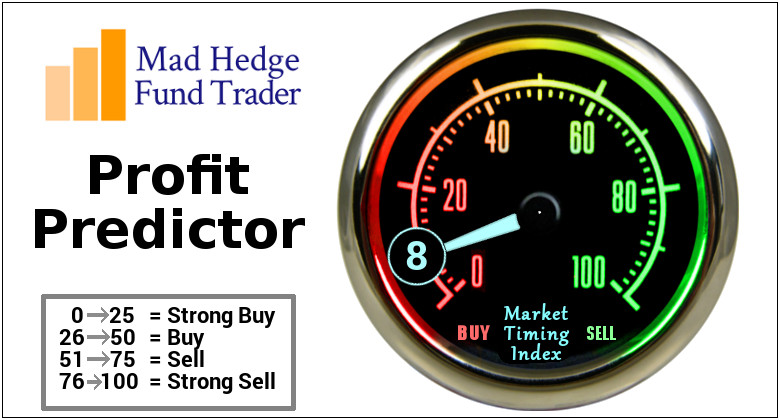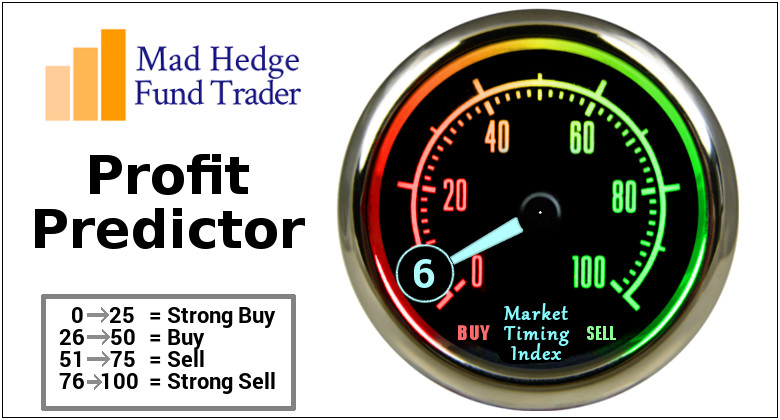
You know those bond shorts you're carrying on my recommendation? They are about to pay off big time.
We are only one more capitulation sell-off day in the stock market from bonds starting to fall like a rock.
There is a financial crisis taking place overseas, which you probably don't know, or care about.
Here is my one-liner on this: You should care.
The London Interbank Offered Rate (LIBOR) is a measure of the cost of short-term borrowing in Europe. It is essentially their version of our own Fed funds rate. And here's the problem. It has been rising almost every day for two months.
If you read the financial press, you probably already know about LIBOR as the subject of a bid rigging scandal that prompted billion-dollar fines and jail terms for the parties involved.
You can take this as the opening salvo in the coming credit crisis. It probably won't start to seriously bite here in the US for two years. But it is already hurting the profitability of European banks now.
A staggering $350 trillion in loans in the US and abroad are tied to LIBOR-based loans, including $1.2 trillion in mortgages for high-end homeowners. Rising interest rates for this debt bring immediate pain.
You can see this clearly is the cost of funds around the world, as outlined by the charts below.
Saudi Arabia's cost of funds, or SAIBOR, historically a net supplier of funds to the continent thanks to its perennial oil surplus, has just been raised 60 basis points, the first such move in a decade.
It is causing cash squeeze in Hong Kong, as seen through escalating HIBOR rates. Even Australian banks, normally seen as the bedrock of the global financial system, have seen the sharpest rise in interest rates in eight years.
Of course, the reasons for the global credit squeeze here at home are screamingly obvious. The US government is in the process of tripling its annual borrowing needs, as the budgets deficit soars from $400 billion to $1.2 trillion.
Exacerbating the influence on the markets is the US Treasury's new preference for short-term borrowing instead of the long-term kind, thus boosting the cost of shorter-term money.
This is to reduce the immediate up-front cost of borrowing. Like so many administration policies, it is reaping a short-term paper advantage for a very much higher long-term real cost.
As we are just entering a 20-year bear market for bonds, the Feds should be borrowing as much long-term money as they possibly can.
This is what private corporations are doing, such as Apple (AAPL) and Goldman Sachs (GS), issuing 30- to 100-year bonds, even though they don't need the money.
The tax bill passed at the end of 2017 also has had the unintended side effect of raising European rates. US companies now are mobilizing some $2.5 trillion to bring home at minimal tax rates.
That has brought them to unload longer term investments and shift the funds into overnight commercial paper, further boosting rates.
You normally don't see this kind of divergence in domestic and foreign costs of money without some kind of credit crisis.
Nervous eyes are cast toward Germany's Deutsche Bank (DB), holder of the world's largest derivatives book, and whose share price has plunged a stunning 30% in two months. Clearly, the insider money is getting out. Expect to hear a lot more about Deutsche Bank in the coming months.
I have said all along that the true cost of the tax bill won't be in the immediate up-front price tag, but the long-range unintended consequences.
You don't turn America's $20.5 trillion economy on a dime without creating a lot of disruption. And now they want to pass a second tax bill!
Spiking Rates are Becoming a Real Headache
Practically every day, I get emails from readers asking me to take over management of their money so I can execute my Trade Alerts for them.
With an 80% success rate and a 34% average annualized return, why wouldn't they?
Unfortunately, I have to turn down these invitations.
Watching the markets, doing the research for new Trade Alerts, keeping up with a global speaking and conference schedule, and running the Mad Hedge Fund Trader empire is so demanding that I have little time for anything else.
On top of that, I have my unpaid "hobby" of advising various arms of the United States government, including the US Treasury, The Federal Reserve, and the Joint Chiefs of Staff.
When the call comes from Washington, D.C. to jump, I have to ask "How high?"
Any other patriot would do the same.
In any case, actively managing someone else's money would raise conflicts of interest and regulatory problems.
I learned early on at Morgan Stanley decades ago to stay miles away from the "gray" areas. Leave those marginal lines of business to competitors, and they will inevitably blow up.
However, there is one way I can help. I can turn these contacts over to you, a professional financial advisor.
The assets of my readers looking for execution help can vary anywhere from $10,000 to $1 billion.
Their financial sophistication will range from entry-level beginner to a seasoned pro who would rather spend time on a golf course than in front of a screen.
So this could be the ideal opportunity for a starting financial advisor to build a new business, or an established firm to fill up the dance card for some junior staff. Invest in your customers, and they will pay you handsomely over the long term.
I won't know all these people personally, as I have thousands of followers. You'll have to get to know them on your own. All I know is that they had the smarts to buy my service and have stuck with it.
If you think your business would benefit from my own customer contacts, please send an email to Nancy at customer support at support@madhedgefundtrader.com and put "FINANCIAL ADVISOR AVAILABLE" in the subject line.
Please include your contact information, including phone number, address, email contact, and years of experience in the industry.
We will add it to our list of "Preferred Financial Advisors" and send it out when reader inquiries come in.
Any financial advisor who knows which end of a stock to hold upward should be able to add value for these new clients.
Knowledge of stocks and ETFs is standard now. Some experience in options trading is also helpful, as I often use these risk-controlling instruments in my Trade Alerts.
And, of course, you will be getting excellent guidance from myself as a reader of this newsletter.
My goal here is to see that my readers get the most out of our services, and participate in the Mad Hedge Fund Trader global trading and investment community.
Anything I can do to enhance your profits and level the dreadfully uneven playing field with Wall Street is a win for me.
My only request here is that you subscribe to my Mad Hedge Fund Trader Pro newsletter and trade alert service, but only after your new client funds his account.
Good luck and good trading.
John Thomas
The Mad Hedge Fund Trader
"A fool learns from experience. A wise man learns from the experience of others," said Otto von Bismarck, the first Chancellor of Modern Germany.
Global Market Comments
April 3, 2018
Fiat Lux
Featured Trade:
(TUESDAY, JUNE 12, NEW ORLEANS, LA, GLOBAL STRATEGY LUNCHEON),
(MARCH 28 BIWEEKLY STRATEGY WEBINAR Q&A),
(TLT), (TBT), (FXY), (GS), (FCX), (CSCO), (INTC), (NEM),
(RIGHTSIZING YOUR TRADING)
Below please find subscribers' Q&A for the Mad Hedge Fund Trader March Global Strategy Webinar with my guest, co-host Bill Davis of the Mad Day Trader.
As usual, every asset class long and short was covered. You are certainly an inquisitive lot, and keep those questions coming!
Q: Should I hold onto long positions in FANG and Tech through the correction?
A: I would - these market moves happen so fast you won't be able to get back into them when it's time to buy. If you're a longer-term investor, it's better to take the pain if you want to outsmart the market. Keep your long positions; if you have a short-term trading book, you should have come out already.
Q: Would you buy Amazon here?
A: I would. I would start scaling in now, buying a few shares on every one of these big sell-off days. Their business model is stronger than ever. The Trump threats all amount to nothing. And if Amazon weren't doing this job another company would, most likely a Chinese one. This is all political noise, bluff, and posturing. I think (AMZN) could hit $2,000 in the next year.
Q: Every time I try to enter an option spread position in the (TLT) I have difficulty getting filled. Why is that?
A: As we're in a bear market in bonds now, liquidity in the options market is shrinking. Also, as you get extreme moves in the stock market, you're getting similar extreme moves in bonds. It's hard to get any kind of Trade Alert out on anything when markets move 600 points in two hours.
Q: Is this a bear market?
A: No, this is just a correction in a bull market, but it may be a vicious one because we've gone so long without one. We've really gone three years without a major correction like this one.
Q: The Japanese yen (FXY) is hitting new highs, is it time for a short?
A: Yes, but not yet; wait for that capitulation day in the stock market - you will be able to sell the yen short several points higher.
Q: Is Goldman Sachs (GS) still good for the medium term, and are they expecting record profits?
A: Yes, however even the best company in the world with the best earnings cannot stand up in the face of these gigantic selling waves that we're getting on everything. Financials in particular are getting hurt by the dips in interest rates and rising bond prices.
Q: Do we hold the China "A" in tech shares or sell and try to buy back later?
A: For the technology shares, it's really too late to sell here. Your sell day was either two weeks ago or the end of January. If you've already taken a 20% hit on these things, at this point I would hang on and take the last 5% or 10% in downside on these, before they rally back up again. Remember, these things could all hit new highs again in May, which is only a month away, when they report blockbuster earnings.
Q: Which stocks would you buy on this dip?
A: I would go after the laggard techs - the two big ones are Cisco Systems (CSCO) and Intel (INTC). I'm looking to add Cisco Systems for both The Global Trading Dispatch and the Mad Hedge Technology services at the end of this correction.
Q: Why haven't you sold volatility (VIX) yet?
A: I am looking for the final capitulation move I mentioned before - a fake breakdown in the S&P 500 (SPY) below the 200-day moving average at $256 to create another massive volatility spike into the low to mid-$30s.
Q: Will the trade war escalate?
A: Who knows? No one has been able to predict what this administration will do. They have been warning of trade wars for the last 18 months, but could you really stay out of the market for that long because of the risk of a trade war? No.
Q: Is North Korea still a threat?
A: No, they never were a threat. The whole thing is made up for political purposes.
Q: What's the problem with the ProShares Ultra Short 20+ Year Treasury Bond Fund (TBT)?
A: (TBT) costs you 60 basis points/month to maintain a negative carry; that's what it costs you to pay a double coupon on your short Treasuries, plus the management fee and expenses. So, in flat markets you can do OK with a put spread on the (TLT), but the (TBT) loses money in that situation. For that reason, it's a short-term trading vehicle, not a long-term hold.
Q: Should I be selling bonds here?
A: Absolutely, yes, but give it a few more basis points of upside.
Q: With oil strong, should I buy oil stocks here (XLE)?
A: No, the performance has been terrible even with oil prices rising. What happens to oil stocks when oil goes back down again? They fall.
Q: Is the Japanese yen (FXY) a buy, now that it has broken out?
A: No, you do not buy break outs, you buy breakdowns. I would wait for the Japanese yen to peak here and then sell.
Q: Should I sell Freeport McMoRan (FCX)?
A: A short term yes, long term, no. The global synchronized recovery story will come back once the trade war news goes away.
Q: What is your Newmont Mining (NEM) outlook?
A: I would be buying the dips here but only in small sizes.
Q: Can you go over exactly what the coming capitulation in the S&P 500 (SPY) would look like?
A: Break of the 200-day moving average on high volume.
Q: What do you see as the low on the 10-year US Treasury yield (TLT)?
A: I would think 2.70% would be the bottom on this move, maybe another point in the (TLT) and that would be a very ripe, short-selling area.
Good Luck and Good Trading!
John Thomas
CEO & Publisher
The Diary of a Mad Hedge Fund Trader
Global Market Comments
April 2, 2018
Fiat Lux
Featured Trade:
(MARKET OUTLOOK FOR THE WEEK AHEAD, or GOODBYE THE QUARTER FROM HELL),
(SPY), (INTC), (AMZN), (CSCO),
(MONDAY, JUNE 11, FORT WORTH, TEXAS, GLOBAL STRATEGY LUNCHEON),
(THE HARD/SOFT DATA CONUNDRUM)
Well, that was some quarter! Call it the quarter from hell.
For as long as most traders and investors can remember, they are losing money so far this year. And they promised us such a rose garden!
The S&P 500 made a valiant, and so far successful effort to hold at the 200-day moving average at $256. We saw an unprecedented four consecutive days of 2% moves.
Yet, with all that tearing of hair, banging of heads against walls, and ulcers multiplying like rabbits, the (SPY) dropped only 5 points since January, off 1.8%, a mere pittance. It's been a whole lot of work and stress for nothing.
So far, the (SPY) has been bracketed by the 50-day moving average on the upside at $272, and the 200-day moving average on the downside. It could continue like this for six more months, forming a very long triangle formation with a year-end upside breakout.
Is the market going to sleep pending the outcome of the November midterm congressional elections?
But here's the catch. We now live in the world of false breakouts and breakdowns, thanks to algorithms. It happened twice in February and March to the upside.
What follows false upside breakouts? How about false downside breakdowns, which may be on the menu for us in April.
My bet is that we'll see one of these soon, taking the (SPY) down as low as $246. Then we'll rocket back up to the middle of the range in another one of those up 100-point days.
What will cause such a catharsis? An escalation of the trade war would certainly do it. Or maybe just a random presidential tweet about anything.
That's why I have been holding fire so far on my volatility shorts and more aggressive longs in stocks.
What will I be buying? Amazon (AMZN), which has essentially an unlimited future. Thank the president for creating a rare 16% selloff and unique buying opportunity with his nonsensical talk about antitrust action.
On what exactly does Amazon have a monopoly? Brilliance?
I also will be taking a look at laggard legacy old tech companies such as Intel (INTC) and Cisco Systems (CSCO). And how can you not like Microsoft here (MSFT)?
Of course, the mystery of the week was the strength in bonds (TLT) taking yields for the 10-year Treasury down to 2.75%. This is in the face of a Treasury auction on Wednesday that went over like a lead balloon.
I think it's all about quarter end positioning more than anything. Some hedge funds have big losses in stocks and volatility trading to cover, and what better way to do it than take profits on bond shorts through buying.
I already have started selling into the rally.
The scary thing about the bond action is that it has accelerated the flattening of the yield curve, with the two-year/10-year spread now only 50 basis points.
It also brings forward the inversion of the yield curve. And we all know what follows that with total certainty: a bear market in stocks and a recession.
The data flow for the coming week is all about jobs, jobs, jobs.
On Monday, April 2, at 9:45 AM, we get the March PMI Manufacturing Index.
On Tuesday morning, we receive March Motor Vehicle Sales, which have recently been weak at 17.1 million units.
On Wednesday, April 4, at 8:15 AM EST, the first of the trifecta of jobs reports comes out with the ADP Employment Report, a read on private sector high.
Thursday, April 5, leads with the Weekly Jobless Claims at 8:30 AM EST, which hit a new 49-year low last week at an amazing 210,000.
At 7:30 AM we get the March Challenger Job Cut Report.
On Friday, April 6, at 8:30 AM EST, we get the Big Kahuna with the March Nonfarm Payroll Report. Last month brought shockingly weak figures.
The week ends as usual with the Baker Hughes Rig Count at 1:00 PM EST. Last week brought a drop of 2.
As for me, I am headed up to Lake Tahoe, Nev., today for spring break to catch the last of the heavy snow. After a record 18 feet in March, Squaw Valley, Calif., has announced that it is keeping the ski lifts open until the end of May.
Good Luck and Good Trading.
It is the greatest conundrum facing traders, investors, and financial advisors today.
The recent "soft" economic data says the economy is booming, animal spirits are roaring, and the Trump trade is alive and well.
The "hard" data indicates that the economy is fading, fear and uncertainty are rampant, and you should sell everything immediately.
It is the greatest hard/soft divergence in the modern history of the US economy.
What's a poor investor to do?
Get this one right, and you'll make a killing. Get it wrong, and your portfolio will turn to ashes.
The numbers are undeniable.
"Soft" data comprises various poll-driven reports, such as consumer confidence and business surveys. These have been running.
The University of Michigan Consumer Sentiment Index hit a decade high in January and is up enormously YOY. Business surveys of every description are breaking records.
That "hard" data comprises economic reports that measure actual activity, such as retail sales.
These have not rebounded nearly as much as the soft data. Retail sales, housing sales, and the negative wealth effect of a falling stock market have all been turning in in-line or disappointing prints.
Here's a further complicating factor. Soft data is forward looking, while hard data is decidedly backward focused, often turning in numbers that are months old.
As a result, many private economic forecasters, and even different agencies of the US government are coming up with spectacularly diverging economic predictions based on the hard/soft weighting of their models.
The Federal Reserve Bank of New York's model, which gives more weight to the soft data, is currently projecting a 3% gross domestic product "print" this year.
On the other hand, the Federal Reserve Bank of Atlanta's model, which incorporates less soft data, is expecting only a 1% print.
You might as well throw a dart at the wall in a dive bar and pick a number.
Dig deeper into the numbers, and your conclusions can only become more disturbing.
It turns out that the overwhelming bulk of positive sentiment is coming from largely small businesses in red Trump-supporting states. They're clearly drinking the Kool-Aid.
You get almost the opposite result on the East and West Coasts, or in surveys that only look at Fortune 500 companies.
Eventually, only one group will be right. Either the hard data will catch up with the soft data, or it won't.
With November midterm elections getting closer by the day, with no new legislation passed this year, I believe the Trump trade will take MUCH longer to play out than expected.
In fact, a major economy-shifting bill may not pass at all this year.
So don't dump your stocks on pain of death. The bull market in stocks probably has at least another year to run.
Just don't expect too much excitement for the next several months.
Sell every rally AND buy every dip. This is what the pros are doing, with great success, as well as the followers of the Diary of a Mad Hedge Fund Trader.
Is This One Hard, Soft, or Both?
Global Market Comments
March 29, 2018
Fiat Lux
Featured Trade:
(IS IT ALL OVER FOR ARTIFICIAL INTELLIGENCE?),
(GOOGL), (TSLA), (NVDA), (LRCX), (AMD), (BOTZ),
(CHINA'S COMING DEMOGRAPHIC NIGHTMARE)
Take a look at the worst performing stocks of the past two weeks and they all have one theme in common: artificial intelligence.
You can trace the beginning of the move back to the Arizona crash by an Uber AI autonomous driven car that killed a pedestrian.
As all those who have studied chaos theory in mathematics, it's like the proverbial butterfly that flapped its wings in a Brazilian rain forest, which then triggered a typhoon in Japan.
Never mind that the pedestrian was jaywalking at night wearing dark clothes. AI is supposed to see this. My guess is that only a sensor failure could have caused the accident, a dud $5 part, which means it has nothing to do with AI.
This is the second autonomous driving death in three years. The last one, involving a Tesla Model S-1 in Florida, didn't see the back of a white truck while driving into the sun, and crashed into it, killing the driver.
And here is the problem if you are a trader or investor.
Autonomous driving has been a major theme in the entire tech sector for the past two years.
You can start with the car companies, Tesla (TSLA), Uber, and Google's (GOOGL) Waymo, and extend all the way out through the entire ecosystem.
That would include the chip makers, NVIDIA (NVDA), which is suspending its autonomous program, Intel (INTC), Advanced Micro Devices (AMD), and the chip equipment maker Lam Research (LRCX).
So, is it game over for these companies? Is it time to pick up our marbles and play elsewhere (there is nowhere else)?
I don't think so.
Let's look at the hard numbers involving automobile accidents. During the same three-year period that AI cars killed two people, human drivers killed a staggering 100,000, and left millions with injuries.
So there is absolutely no doubt that AI is the superior technology. AI-driven cars don't text while driving, drink, take drugs, drive while tired, overdo it with an afternoon of wine tasting in Napa Valley, or look down at their cell phones, as did the safety driver in the ill-fated Uber car in Phoenix.
AI is not just a self-driving car theme. It is permeating every aspect of the modern economy and will continue to do so at an accelerating pace. It is no one-hit wonder.
All that is happening now is that AI and tech stocks in general are backing off from grievously overbought conditions.
As we approach the next round of earnings reports in a month, the market focus rapidly will shift back from tedious and distressful technicals. That's when they will rocket again.
There is an old market term for the current state of technology stocks. It is known as a "Buying Opportunity."
I haven't been able to touch stocks I love for months because they were completing upward moves of 50% to 300% over the past two years.
They have just become touchable once again.
To watch the video of the Phoenix crash and the expression of the clueless safety driver, please click here.
























